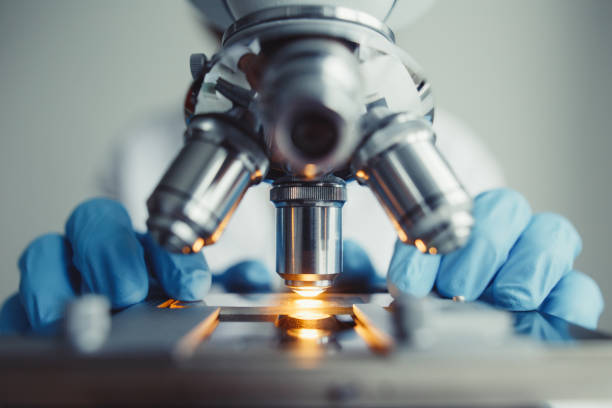The Science Behind Climate Change: Causes, Effects, and Solutions
Climate change is one of the most pressing issues of the 21st century, affecting every aspect of life on Earth. From rising temperatures to more extreme weather events, the impacts of climate change are becoming increasingly evident. To combat this global challenge, it’s essential to understand the science behind it: the causes, effects, and potential solutions. This article delves into the scientific foundation of climate change, examining how human activities have contributed to it, the far-reaching effects on ecosystems and human societies, and the strategies available to mitigate and adapt to its consequences.
1. Understanding the Causes of Climate Change
Climate change refers to long-term alterations in temperature, precipitation, and other atmospheric conditions on Earth. While the Earth’s climate has naturally fluctuated over geological time scales, the current phase of climate change is largely driven by human activities. The primary drivers of human-induced climate change are:
1.1 Greenhouse Gas Emissions
The most significant factor driving climate change is the increase in greenhouse gases (GHGs) in the atmosphere. Greenhouse gases trap heat from the sun, preventing it from escaping back into space. This natural phenomenon, known as the greenhouse effect, is essential for life on Earth because it keeps the planet warm enough to sustain ecosystems. However, human activities have amplified this effect, leading to an increase in global temperatures, known as global warming.
The main greenhouse gases contributing to climate change are:
- Carbon dioxide (CO2): The primary GHG responsible for global warming, CO2 is released through the burning of fossil fuels (such as coal, oil, and natural gas) for energy, transportation, and industrial processes. Deforestation also contributes to CO2 emissions, as trees absorb carbon dioxide, and their removal reduces this natural carbon sink.
- Methane (CH4): Methane is released during the production and transport of coal, oil, and natural gas, as well as from agricultural activities, particularly livestock digestion and rice paddies. Methane is a potent greenhouse gas, with a global warming potential much higher than CO2, though it is present in much smaller quantities.
- Nitrous oxide (N2O): Emissions of nitrous oxide come from agricultural and industrial activities, including the use of synthetic fertilizers. It is a powerful GHG with a long atmospheric lifetime.
- Fluorinated gases: These include synthetic gases such as hydrofluorocarbons (HFCs), perfluorocarbons (PFCs), and sulfur hexafluoride (SF6). These gases are primarily used in industrial applications like refrigeration and air conditioning but are much more potent than CO2.
1.2 Land Use Changes
Land use changes, particularly deforestation, play a significant role in climate change. Forests and other natural ecosystems act as carbon sinks, absorbing CO2 from the atmosphere. When forests are cleared for agriculture, urbanization, or logging, the stored carbon is released back into the atmosphere, exacerbating the greenhouse effect. Additionally, land use changes reduce the Earth’s capacity to absorb CO2, further contributing to global warming.
1.3 Industrial Processes and Agriculture
In addition to the burning of fossil fuels, industrial processes such as cement production and chemical manufacturing release substantial amounts of CO2 and other GHGs into the atmosphere. Similarly, agricultural practices contribute to climate change by producing methane and nitrous oxide, primarily from livestock and fertilizer use. The rise in large-scale agriculture, along with the expansion of industrial activities, has had a profound impact on the global climate.
2. Effects of Climate Change
The effects of climate change are far-reaching and can have serious consequences for both natural ecosystems and human societies. These effects include:
2.1 Rising Global Temperatures
One of the most visible effects of climate change is the increase in global temperatures. According to the Intergovernmental Panel on Climate Change (IPCC), the Earth’s surface temperature has increased by about 1.2°C since the late 19th century, with the last few decades seeing the most rapid warming. This may seem like a small increase, but even modest temperature changes can have significant effects on ecosystems and weather patterns.
Rising temperatures contribute to more frequent and intense heatwaves, particularly in regions that are already prone to extreme heat. These heatwaves can lead to droughts, wildfires, and water scarcity, affecting agriculture, water supplies, and human health.
2.2 Melting Ice and Rising Sea Levels
The warming climate is causing the polar ice caps and glaciers to melt at an accelerated rate. As a result, sea levels are rising, threatening coastal communities, ecosystems, and infrastructure. The loss of ice also contributes to a positive feedback loop, as the reflective ice surfaces (albedo) are replaced by darker ocean waters, which absorb more heat and accelerate the melting process.
Rising sea levels threaten low-lying countries and islands, including Bangladesh, the Maldives, and parts of the United States, such as Florida. Coastal flooding, erosion, and saltwater intrusion into freshwater supplies are some of the immediate consequences that threaten human populations and ecosystems.
2.3 Changes in Precipitation Patterns and Extreme Weather
As the planet warms, precipitation patterns are shifting, leading to more intense and unpredictable weather events. Some regions are experiencing more frequent and severe floods, while others are facing prolonged droughts. These changing weather patterns have significant implications for agriculture, as inconsistent rainfall can destroy crops, reduce water availability, and increase the frequency of crop failures.
In addition to changes in precipitation, the increasing temperature is driving more extreme weather events, including powerful hurricanes, cyclones, and storms. These events cause significant damage to infrastructure, loss of life, and disruptions to communities, particularly in vulnerable regions.
2.4 Impacts on Ecosystems and Biodiversity
Climate change is also taking a toll on ecosystems and biodiversity. Rising temperatures, ocean acidification, and habitat loss are threatening species worldwide. Coral reefs, which are particularly sensitive to temperature fluctuations, are experiencing widespread coral bleaching and die-offs due to elevated sea temperatures and acidification caused by increased carbon dioxide absorption by oceans.
Increased temperatures are also shifting ecosystems, pushing species toward cooler areas or causing them to face higher risks of extinction. The migration patterns of animals, such as birds and marine species, are being disrupted, and plant life is also affected by changing growing seasons. The loss of biodiversity reduces ecosystem services like pollination, water filtration, and soil fertility, further exacerbating climate challenges.
3. Solutions to Combat Climate Change
Addressing climate change requires both mitigation (reducing the causes of climate change) and adaptation (adjusting to the impacts of climate change). Several solutions are being pursued to mitigate the effects of climate change and reduce the emissions driving it.
3.1 Transitioning to Renewable Energy
The most crucial step in mitigating climate change is reducing our reliance on fossil fuels and transitioning to renewable energy sources such as solar, wind, hydropower, and geothermal energy. These energy sources produce little to no greenhouse gas emissions, making them key to reducing carbon emissions.
Technological advancements in renewable energy, such as improved efficiency and lower costs of solar panels and wind turbines, are accelerating the transition. Governments and organizations worldwide are setting ambitious renewable energy targets to replace fossil fuels with clean energy and reduce greenhouse gas emissions.
3.2 Enhancing Energy Efficiency
Improving energy efficiency across industries, transportation, and households is another important strategy. Energy-efficient technologies, such as LED lighting, energy-efficient appliances, and electric vehicles, reduce the overall demand for energy and lower emissions. Governments can encourage energy efficiency through policies, incentives, and regulations.
3.3 Protecting and Restoring Forests
Forests play a crucial role in absorbing CO2 from the atmosphere. Protecting existing forests, as well as restoring degraded ecosystems, can help mitigate climate change. Reforestation and afforestation efforts, including the planting of trees in areas that have been deforested, contribute to carbon sequestration and the preservation of biodiversity.
3.4 Carbon Capture and Storage (CCS)
Carbon capture and storage (CCS) is a technology designed to capture CO2 emissions from power plants and industrial processes before they are released into the atmosphere. The captured CO2 is then stored underground in geological formations. While CCS is still in its early stages, it has the potential to significantly reduce emissions from industries that are difficult to decarbonize.
3.5 Adaptation Strategies
Adaptation to climate change is equally important, especially for communities that are already experiencing its effects. Adaptation strategies include building resilient infrastructure to withstand extreme weather events, improving water management, and developing drought-resistant crops for agriculture. Investment in disaster preparedness and response is also crucial to reduce the impacts of climate-related events on vulnerable populations.
3.6 International Cooperation
Climate change is a global problem that requires global solutions. International agreements like the Paris Agreement, which aims to limit global temperature rise to below 2°C, are vital in fostering cooperation among countries to reduce emissions and promote sustainable development. Developing countries, in particular, need financial and technical support to mitigate and adapt to climate change.
4. Conclusion
Climate change is one of the most significant challenges facing humanity today. Understanding its causes, including the burning of fossil fuels and deforestation, is crucial to addressing the issue. The effects of climate change—rising temperatures, melting ice, extreme weather, and ecosystem disruption—pose serious risks to human societies and the natural world. However, there are solutions that can mitigate and adapt to these changes, such as transitioning to renewable energy, enhancing energy efficiency, protecting forests, and advancing new technologies like carbon capture.
Tackling climate change requires a global effort, with cooperation across governments, businesses, and individuals. It is a race against time, but with concerted action, we can limit its impacts and work toward a more sustainable future for generations to come.






